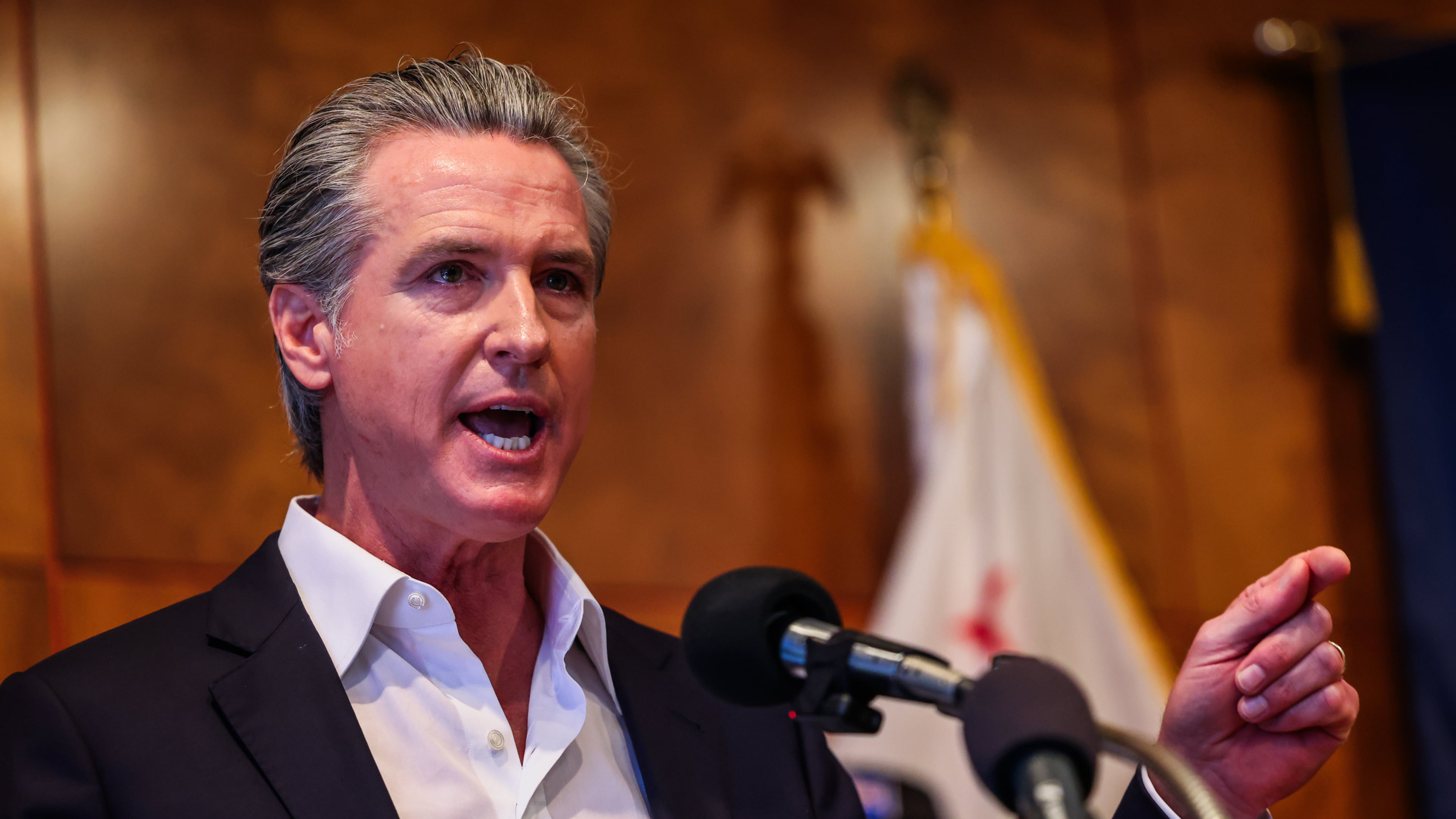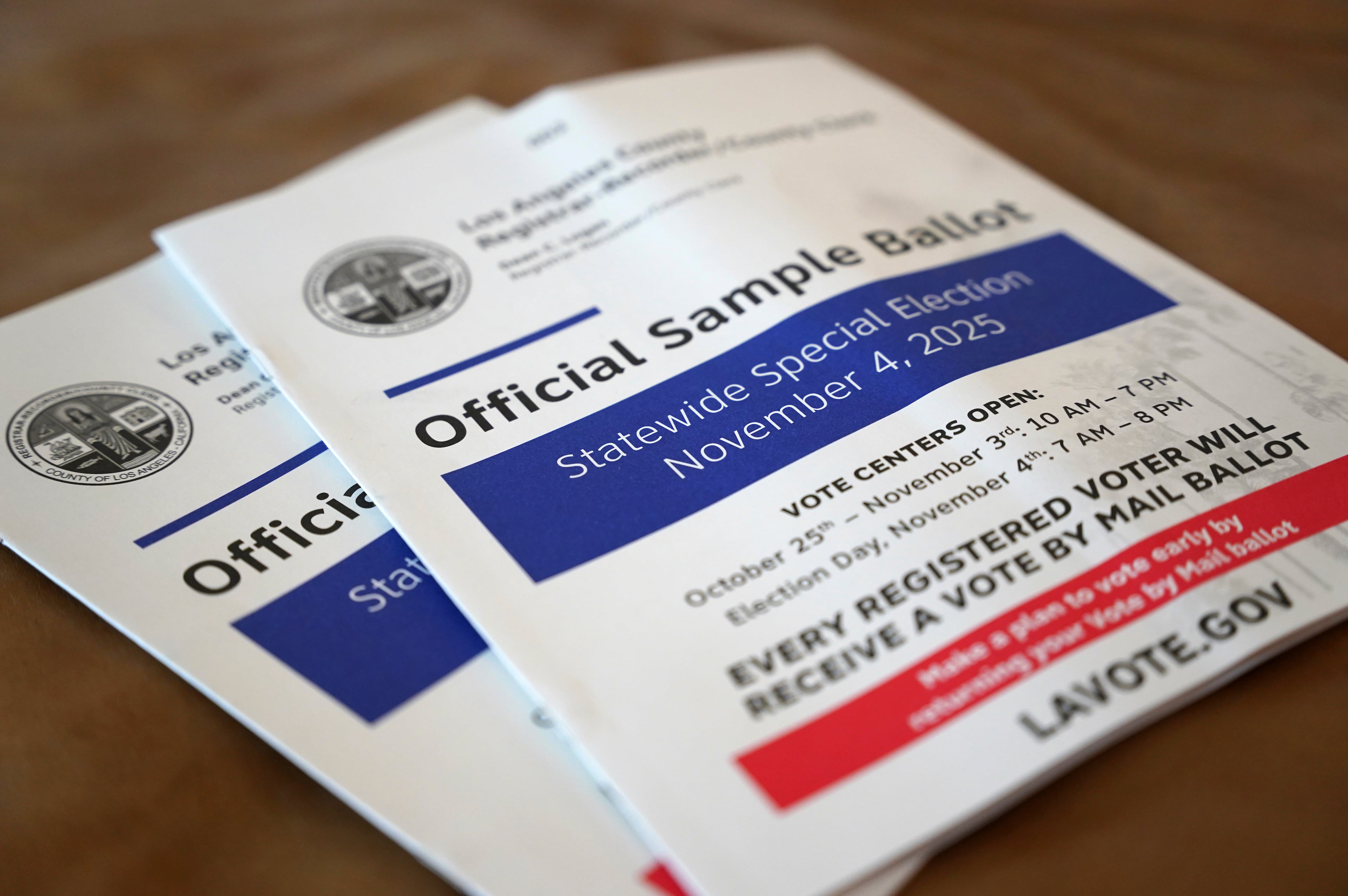California voters take up Prop 50, a Democratic push for more US House seats

LOS ANGELES (AP) — The national battle to control the U.S. House shifts to California on Tuesday as voters consider a Democratic proposal that could erase as many as five Republican districts and blunt President Donald Trump’s moves to safeguard his party's lock on Washington power.
The outcome will reverberate into next year’s midterm elections and beyond, with Democrats hoping a victory will set the stage for the party to regain control of the House in 2026. A shift in the majority would imperil Trump’s agenda for the remainder of his term at a time of deep partisan divisions over immigration, health care and the future direction of the nation.
“God help us if we lose in California,” Democratic Gov. Gavin Newsom says.
Democrats need to gain just three seats in the 2026 elections to take control of the House.
Heavily Democratic California and its 52 congressional districts represent by far the Democrats’ best opportunity in an unprecedented state-by-state redistricting battle, which started when Texas Republicans heeded Trump’s demand that they redraw their boundaries to help the GOP retain its House majority. Democrats hold 43 of the state's seats and hope to boost that to 48.
Trump is fighting not just the Democrats but history. Midterm elections typically punish the party in the White House, but four GOP-led states so far have adopted new district maps to pack more Republican voters into key districts.
Measure supported by Newsom, Obama
California’s Proposition 50 asks voters to suspend House maps drawn by an independent commission and replace them with rejiggered districts adopted by the Democratic-controlled Legislature. Those new districts would be in place for the 2026, 2028 and 2030 elections.
The recast districts aim to dilute Republican voters' power, in one case by uniting rural, conservative-leaning parts of far northern California with Marin County, a famously liberal coastal stronghold across the Golden Gate Bridge from San Francisco.
The measure has been spearheaded by Newsom, who has thrown the weight of his political operation behind it in a major test of his mettle ahead of a potential 2028 presidential campaign. Former President Barack Obama has urged voters to pass it as well.
Newsom has sought to nationalize the campaign, depicting the proposal as a counterweight to all things Trump.
“Republicans want to steal enough seats in Congress to rig the next election and wield unchecked power for two more years,” Obama says in one ad. “You can stop Republicans in their tracks.”
Critics say two wrongs don’t make a right. They urge Californians to reject what they call a Democratic power grab, even if they have misgivings about Trump's moves in Republican-led states.
Among the most prominent critics is Arnold Schwarzenegger, the movie star and former Republican governor who pushed for the creation of the independent commission, which voters approved in 2008 and 2010. It makes no sense to fight Trump by becoming him, Schwarzenegger said in September, arguing that the proposal would “take the power away from the people.”
After an early burst of TV advertising, opponents of the plan have struggled to raise cash in a state with some of the nation's most expensive media markets. Data compiled by advertising tracker AdImpact last week showed Democrats and other supporters with over $5 million in ad buys booked on broadcast TV, cable and radio. But opponents had virtually no time reserved, though the data didn’t include some popular streaming services like Hulu and YouTube or mail advertising.
Total spending on broadcast and cable ads topped $100 million, with more than two-thirds of it coming from supporters. Newsom told people to stop donating in the race's final weeks.
Trump, who overwhelmingly lost California in his three presidential campaigns, largely stayed out of the fray. A week before the election, he urged voters in a social media post not to vote early or by mail — messaging that conflicts with that of top Republicans in the state who urged people to get their ballots in as soon as possible.
The national House map is in flux
Democrats hope to pick up as many as five seats in California if voters approve the new boundaries, offsetting the five that Republicans hope to pick up through their new Texas maps. Republicans also expect to gain one seat each from new maps in Missouri and North Carolina, and potentially two more in Ohio.
Congressional district boundaries are typically redrawn every 10 years to reflect population shifts documented in the census. Mid-decade redistricting is unusual, absent a court order finding fault with the maps in place.
Five other GOP-led states are also considering new maps: Kansas, Indiana, Kansas, Louisiana and Nebraska.
On the Democratic side, Illinois, Maryland, New York and Virginia have proposals to redraw maps, but major hurdles remain.
A court has ordered new boundaries be drawn in Utah, where all four House districts are represented by Republicans, but it remains to be seen if the state will approve a map that makes any of them winnable for Democrats.
___
Cooper reported from Phoenix and Nguyen from Sacramento, California.
